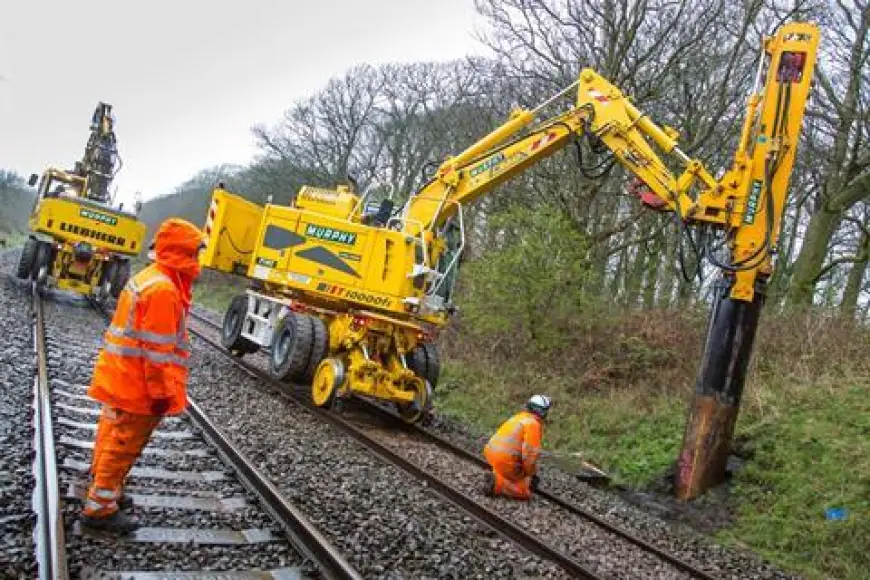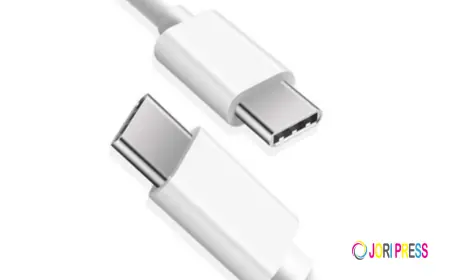Forecast Report on India Railway Equipment Market 2030
Despite the positive growth outlook, the market still faces challenges such as high project costs, land acquisition issues, and bureaucratic hurdles.

Introduction
India's railway system, one of the largest and most widely used networks in the world, is undergoing a remarkable transformation. With rising urbanization, surging demand for public transport, and a renewed government focus on infrastructure, the India Railway Equipment Market is experiencing robust growth. According to recent estimates, the market stood at USD 12.31 billion in 2024 and is projected to reach USD 15.9 billion by 2030, expanding at a CAGR of 3.61%.
This growth is being fueled by technological advancements, sustainability initiatives, and an emphasis on safety and multimodal connectivity. From high-speed rail to intelligent signaling and electrified tracks, the Indian railway ecosystem is evolving into a high-capacity, environmentally conscious, and digitally enhanced transit system.
Emerging Trends Shaping the Indian Railway Equipment Market
1. Digital Transformation & Smart Railways
The digital revolution is making significant inroads into Indian railways. Smart signaling systems, automatic train control, AI-based surveillance, IoT-based maintenance sensors, and centralized traffic management are just a few examples of how railways are embracing the digital age.
2. Electrification of Rail Routes
To reduce dependence on fossil fuels and carbon emissions, Indian Railways is pushing for full electrification. The move away from diesel locomotives opens a large market for electric locomotives, overhead equipment, transformers, and smart substations.
3. Indigenous Manufacturing and Atmanirbhar Bharat
The "Make in India" initiative is promoting the localization of railway equipment. Indigenous production of rolling stock, control systems, and steel components is leading to cost efficiency and job creation while reducing import dependency.
4. High-Speed Rail Projects
India's bullet train projects are ushering in a new era of speed and efficiency. These projects require state-of-the-art infrastructure and specialized equipment such as aerodynamic coaches, maglev-compatible systems, and premium-quality tracks.
5. Green and Sustainable Rail Solutions
Eco-conscious rail solutions like solar-powered stations, regenerative braking systems, and biodegradable train toilet systems are becoming mainstream. Sustainability is no longer optional—it's a demand driver for equipment manufacturers and rail operators.
Download Free Sample Report: https://www.techsciresearch.com/sample-report.aspx?cid=4216
Market Drivers: What’s Fueling Growth?
1. Urbanization and Metro Rail Expansion
Rapid urban growth in cities like Delhi, Mumbai, Bengaluru, and Hyderabad is pushing the expansion of metro and suburban rail systems. These require massive investments in new rolling stock, signal systems, station equipment, and track infrastructure.
2. Safety and Security Concerns
With rising passenger volumes, ensuring safety across the network is imperative. The need for automated gates, surveillance, anti-collision devices, and improved track systems is propelling demand for advanced railway equipment.
3. Government Policies and Investment
Initiatives like the National Infrastructure Pipeline (NIP), Gati Shakti, and the Vision 2030 roadmap have allocated significant funding to rail infrastructure. Public-private partnerships and foreign direct investment (FDI) are also enhancing industry prospects.
4. Multimodal Transport Integration
Creating seamless transitions between metros, buses, suburban trains, and high-speed rail is key to future urban mobility. Integrated ticketing, synchronized scheduling, and uniform design standards for intermodal stations are enabling smooth passenger journeys.
Industry Key Highlights
- Market Size (2024): USD 12.31 Billion
- Projected Market Size (2030): USD 15.9 Billion
- CAGR (2024–2030): 3.61%
- Fastest Growing Region: Southern India
- Key Market Segments: Rolling Stock, Infrastructure, Signaling
- Top Trends: Electrification, AI, Sustainability, Metro Expansion
- Leading Players: Siemens AG, Alstom SA, Wabtec Corp., CRRC Corp.
Market Segmentation
By Type
- Rolling Stock – Includes locomotives, passenger coaches, freight wagons, and maintenance vehicles. Innovation in coach design, energy-efficient engines, and light-weight wagons is redefining this space.
- Railway Infrastructure – Covers tracks, signals, stations, bridges, and tunnels. Digital signaling, smart stations, and electric track upgrades are core developments.
- Others – Encompasses control systems, power systems, maintenance tools, and track monitoring equipment.
By Application
- Locomotives
- Diesel and Electric Multiple Units (DMUs & EMUs)
- Freight Vehicles
- Passenger Coaches
- Others (Maintenance Vehicles, Heritage Units, etc.)
By Region
- North India – Focus on freight corridors and modernization.
- West India – Hub for industrial transport and rail terminals.
- East India – Emphasis on connectivity and infrastructure upgrades.
- South India – Fastest growing, with investments in metro and regional rail.
- Central India – Emerging potential in semi-urban and rural railway networks.
South India: Leading the Market Momentum
In 2024, the South Indian region emerged as the fastest-growing hub in the railway equipment landscape. Several factors contribute to this:
- Expansion of metro rail in Bengaluru, Hyderabad, and Chennai
- Electrification of key routes connecting industrial corridors
- Investment in high-speed corridors between key cities
- Surge in demand for modern coaches and locomotives
- Development of smart stations and improved track layouts
The southern region’s aggressive adoption of sustainable mobility and cutting-edge railway technology underscores its leadership in India's rail renaissance.
Competitive Analysis
The Indian railway equipment market features both global giants and strong domestic players. Competitive strategies include technology partnerships, localization of production, and innovation in green mobility solutions.
Major Players:
- CRRC Corp. Ltd – World’s largest rolling stock manufacturer with increasing presence in Indian metro projects.
- Siemens AG – A leader in electrification, automation, and signaling technology.
- Bombardier Inc. – Known for lightweight EMUs and metro rail coaches.
- Alstom SA – Key player in high-speed and sustainable rail solutions.
- Wabtec Corporation (GE Transportation) – Specializes in freight locomotives and signaling.
- Hyundai Rotem – Supplies metro coaches and contributes to urban mobility.
- Stadler Rail AG – Brings innovation in passenger coach design and trainsets.
- The Greenbrier Companies – Dominates freight wagons and maintenance vehicle production.
- Trinity Industries Inc. – Engaged in supplying high-efficiency freight cars.
These companies are focused on regional manufacturing hubs, R&D investment, and strong after-sales support, aligning with India's growth trajectory in rail modernization.
Future Outlook
The future of the India Railway Equipment Market looks optimistic, driven by:
- Continued emphasis on metro and suburban rail expansion
- Modernization of long-distance trains
- Electrification and sustainability goals
- Strategic alliances for advanced signaling systems
- Bullet train corridors boosting high-end equipment demand
- Emergence of private train operators enhancing competition and quality
India is expected to become a global hub for railway technology and innovation. The confluence of policy support, market demand, and industrial capacity will push the sector toward digitization, carbon neutrality, and operational excellence.
10 Benefits of the Research Report
- Market Sizing and Forecasting
Gain clarity on the market size and growth projections till 2030. - In-Depth Segmentation
Understand the detailed breakdown by type, application, and region. - Competitive Landscape
Get insights into leading players, their strategies, and market share. - Trend Analysis
Identify key trends including smart infrastructure and electrification. - Investment Insights
Discover high-growth areas and segments attracting capital. - Technological Advancements
Learn how digital innovations are reshaping railway equipment. - Regional Insights
Understand which regions are growing fastest and why. - Regulatory Framework
Stay updated on government policies and investment incentives. - Strategic Recommendations
Explore actionable strategies for businesses, investors, and policymakers. - Customization Option
Receive tailored insights specific to your business needs or market interests.
Conclusion
India’s railway equipment market is poised for steady yet impactful growth through 2030. As the nation transitions toward high-capacity, low-emission transport systems, the need for innovative railway equipment will surge across passenger and freight segments. Stakeholders—from OEMs and infrastructure providers to policymakers and investors—have a unique opportunity to shape the future of Indian mobility.
Whether through bullet trains, AI-powered stations, or green freight corridors, India's railway ecosystem is evolving into a symbol of modern engineering, connectivity, and sustainability. The time is ripe for those who wish to ride the rails of transformation.
Contact Us-
Mr. Ken Mathews
708 Third Avenue,
Manhattan, NY,
New York – 10017
Tel: +1-646-360-1656
Email: [email protected]
Website: www.techsciresearch.com
What's Your Reaction?
 Like
0
Like
0
 Dislike
0
Dislike
0
 Love
0
Love
0
 Funny
0
Funny
0
 Angry
0
Angry
0
 Sad
0
Sad
0
 Wow
0
Wow
0



















































